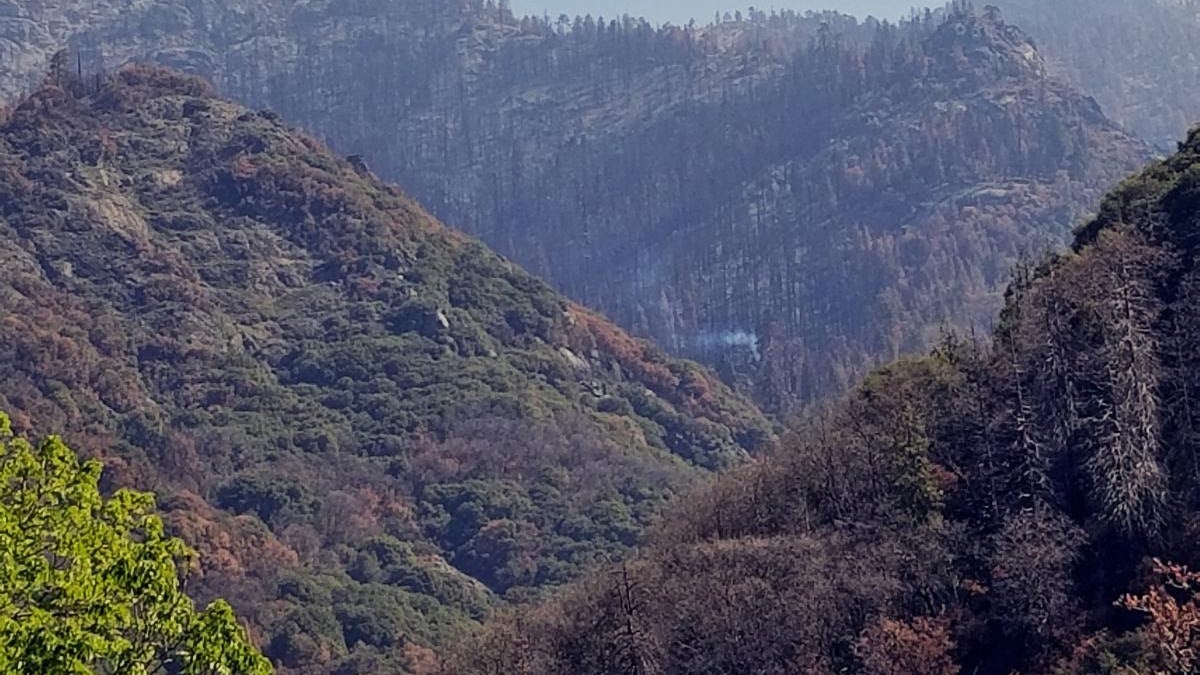One of the 2020 Wildfires Is Still Smoldering in Sequoia National Park

(Photo: National Park Service)
A burn area in Sequoia National Park is still smoldering in at least one spot nine months after it first began to burn, the National Park Service (NPS) said today.
In a press release, the NPS said that a group of scientists and fire personnel were surveying the site of the 2020 Castle Fire when they spotted a giant sequoia “smoldering and smoking” in a burned-over area known as the Board Camp Grove. According to the release, the burning sequoia is well away from firelines and trails, but is visible from the Ladybug Trail, a 7.2-mile out-and-back that leaves from the South Fork Campground at the park’s southern end.
“The fact areas are still smoldering and smoking from the 2020 Castle Fire demonstrates how dry the park is,” said Leif Mathiesen, assistant fire management officer for Sequoia & Kings Canyon National Parks. “With the low amount of snowfall and rain this year, there may be additional discoveries as spring transitions into summer.”
The lightning-caused Castle Fire was discovered on August 19, 2020. It went on to connect with another blaze, the Shotgun Fire, to form what emergency managers dubbed the SQF Complex, burning 174,178 acres across Sequoia National Forest, Giant Sequoia National Monument, Inyo National Forest, and Sequoia National Park before crews managed to fully contain it on January 6. In an update following containment, emergency managers warned that the burn area would continue to be hazardous for some time.
“Smoldering debris around tree trunks continued to weaken fire-damaged trees, posing a hazard of them falling at any time,” they wrote on Inciweb. “Smoldering stump holes and their roots were found burning months after a wildfire, posing a hazard for anyone stepping near or on them.”
Compounding the problem, California is facing one of its driest springs in recent memory. According to the Federal Drought Monitor, the majority of Tulare County, where the park is located, is in “extreme drought,” the second-most-severe designation used by the organization. In its final survey of the season, the California Department of Water Resources found that the state’s snowpack held only 59% as much water as normal.
While park officials say the smoking tree doesn’t pose a threat to public health or safety, they urged hikers to stay on trails and use caution.
“Firefighters and park rangers want to take this opportunity to remind the public the importance of staying on trails, being observant, having a plan, and letting someone know where you’re going and when you plan to return. It’s also important to let that someone know that you’ve returned,” they wrote.